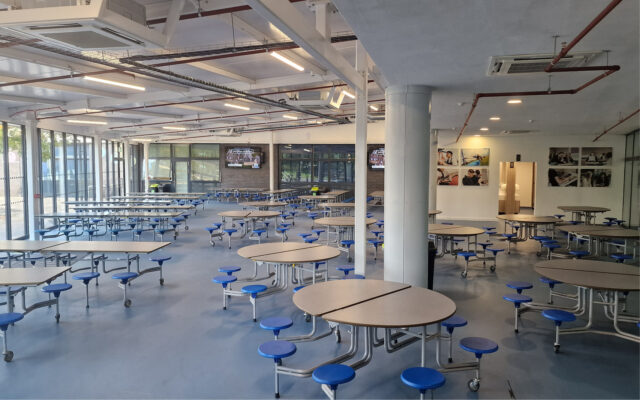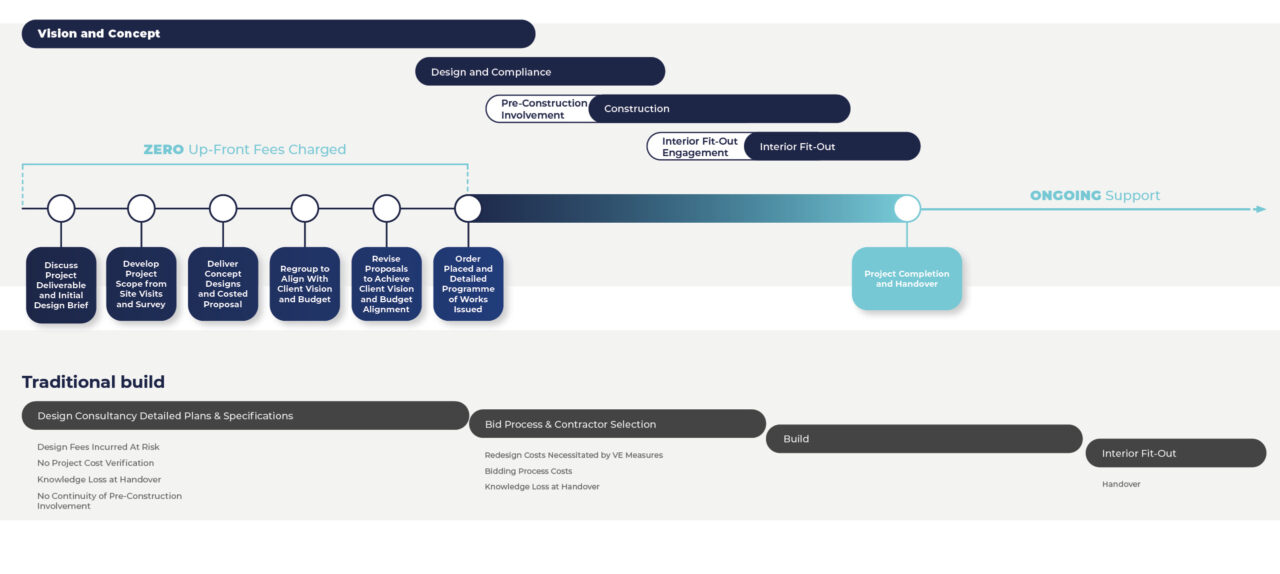There are currently 32,149 schools in the UK of all types, provision, age and size. School buildings represent close to half of the building stock used by UK public services. Ultra-modern academies, crumbling 1970s concrete classrooms and many hundred year old historical school houses all have one thing in common; maintenance, repairs, modernisation – building works of any kind – all require a significant amount of thought because of the very nature of school life.
Done well, building works provide schools with much needed space and access to exciting new facilities. In 2022/23 the DFE announced that over 17% of primary schools and 23% of secondary schools are already over capacity and as such, the need for additional space is compelling. But, done poorly, building works on any school site pose inconvenience, frustration, upheaval and delays; with hundreds, if not thousands of children and staff in the very midst of the mess.
Whether expanding classroom capacity, building new dining or sport facilities, or modernising outdated blocks, the way your school’s construction project is delivered is absolutely crucial to get right.
Traditionally, construction has followed a familiar path of designing first and building later, often delivered by different parties with multiple handovers, contractors and timelines to juggle. Headteachers and school site managers across the country will be all too familiar with the problem that this model can present; namely mess, delays and a feeling of powerlessness.
However, there is another way that more and more schools are finding fundamental to building success:
A design-build model.
What is design-build and why can it be better suited to education projects than traditional construction?
In the traditional model, design and construction phases are handled separately. A school will typically commission architects to draw up plans, then tender for a contractor to carry out the build. The scoping, design and specification process can be both complex and expensive before any work has even started on site. This leads to longer programmes, increased risk and limited cost control.
Design-build takes a different route; one that brings design, planning and construction into a single, integrated team, using proven envelope systems and building services to derisk the specification process. This helps to reduce project costs.
From feasibility to handover, the entire process is managed by one group; one point of contact, one responsible body. Schools we have worked with tell us how valuable this is, especially where time, budget and minimal disruption are absolute non-negotiables.
Schools who have chosen the design-build model consistently highlight four key benefits of the design-build approach.
The first is speed: with overlapping phases and offsite construction, projects can often be completed within school holidays, avoiding disruption to learning. Budgets are more predictable too, with early contractor involvement helping to avoid surprises and cost overruns. Fewer contractors on site and tighter timelines mean day-to-day school life carries on with minimal upheaval. Perhaps most importantly, having just one team; one clear point of contact, ensures confident decision-making and a sense of competence throughout. Schools are not left chasing updates or trying to mediate between separate teams, just dealing with people who understand their priorities and know how to deliver superb results within the education sector.
ZONE Design.Build
Choosing how to deliver your next project is as important as deciding what to build. If your priorities include rapid delivery, minimal disruption and clear cost control, the design-build method is a game-changing choice. ZONE Design.Build is a unique design platform whose team consult and work with some of the largest MATs in the UK, planning, designing and installing first-class facilities for the education sector. ZONE is our way of offering industry leading build times and value per square metre, that simply cannot be matched by traditional methods.
View all News Articles here.




